Silvermane Read online
SILVERMANE
A Western Quartet
ZANE GREY
Copyright © 2013 by Zane Grey, Inc.
Copyright © 2014 by Blackstone Media Group
All rights reserved.
Published by arrangement with Golden West Literary Agency
October 2014
Second Edition
First Ebook Edition
Trade: 978-1-4815-2863-4
Library: 978-1-4815-2862-7
Foreword
by Jon Tuska
Zane Grey was born Pearl Zane Gray in Zanesville, Ohio on January 31, 1872. He was graduated from the University of Pennsylvania in 1896 with a degree in dentistry. He conducted a practice in New York City from 1898 to 1904, meanwhile striving to make a living by writing. He met Lina Elise Roth in 1900 and always called her Dolly. In 1905 they were married. With Dolly’s help, Grey published his first novel himself, Betty Zane (Charles Francis Press, 1903), a story based on certain of his frontier ancestors. Eventually closing his dental office, Grey moved with Dolly into a cottage on the Delaware River, near Lackawaxen, Pennsylvania. It is now a national landmark.
Although it took most of her savings, it was Dolly Grey who insisted that her husband take his first trip to Arizona in 1907 with C.J. “Buffalo” Jones, a retired buffalo hunter who had come up with a scheme for crossing the remaining bison population with cattle. Actually Grey could not have been more fortunate in his choice of a mate. Dolly Grey assisted him in every way he desired and yet left him alone when he demanded solitude; trained in English at Hunter College, she proof-read every manuscript he wrote and polished his prose; she managed all financial affairs and permitted Grey, once he began earning a good income, to indulge himself at will in his favorite occupations: hunting, fishing, sailing, and exploring the Western regions.
After his return from that first trip to the West, Grey wrote a memoir of his experiences titled The Last of the Plainsmen (Outing, 1908) and followed it with his first Western romance, The Heritage of the Desert (Harper, 1910). Due to editorial changes and omissions made by Ripley Hitchcock, Grey’s editor at Harper & Bros., that novel has now been restored as Desert Heritage (Five Star, 2010), the text taken from Zane Grey’s holographic manuscript. The profound effect that the desert had had on him was vibrantly captured in this story, so much so that, after all of these years, it still comes alive for a reader. In a way, too, it established the basic pattern Grey would use in much of his subsequent Western fiction. The hero, Jack Hare, is an Easterner who comes West because he is suffering from tuberculosis. He is rejuvenated by the arid land. The heroine is Mescal, desired by all men but pledged by the Mormon Church to a man unworthy of her. Mescal and Jack fall in love, and this causes her to flee from Snap Naab, for whom she will be a second wife. Snap turns to drink, as will many another man rejected by heroines in other Grey Western romances, and finally kidnaps Mescal. The most memorable characters in this novel, however, are August Naab, the Mormon patriarch who takes Hare in at his ranch, and Eschtah, Mescal’s grandfather, a Navajo chieftain of great dignity and no less admirable than Naab, and the equines, Black Bolly and Silvermane. The principal villain—a type not too frequently encountered in Grey’s Western stories with notable exceptions such as Desert Gold (Harper, 1913), now restored as Shower of Gold (Five Star, 2007)—is Holderness, a Gentile and the embodiment of the Yankee business spirit that will stop at nothing to exploit the land and its inhabitants for his own profit. Almost a century later, he is still a familiar figure in the American West, with numerous bureaucratic counterparts in various federal agencies. In the end Holderness is killed by Hare, but then Hare is also capable of pardoning a man who has done wrong if there is a chance for his reclamation, a theme Grey shared with Max Brand.
The first story is this collection is “Silvermane”. It is concerned with the efforts of two seasoned mustangers, Lee and Cuth Stewart, brothers, to capture the wild stallion Silvermane in the Sevier range country. A bounty of $500 has been placed on the stallion. Although it can stand alone as a story, it was actually a fragment from what was to be a novel about mustangers, a false start, if you will. The fragment is not dated, but it was probably written a year or two after Desert Heritage, since Silvermane in it is quite definitely the same Silvermane present in the novel. Black Bolly, with her name changed to Black Bess, is also quite the same mare. In Desert Heritage, when Black Bolly whistles as the men are pursuing Silvermane, August Naab asks: “‘Now, boys, did she whistle for Silvermane, or to warn him…which?’” The Stewart brothers in “Silvermane” wonder the same thing about Black Bess—is her loyalty to them, or to the wild stallion?
Zane Grey eventually did write his story of mustangers in pursuit of a wild stallion, this time named Panguitch. His title for it was Panguitch, but this title was changed to “Wild Horse Mesa” when the story appeared as a twelve-part serial in The Country Gentleman (4/19/24-7/5/24). Panguitch, based on Zane Grey’s holographic manuscript, will appear as he wrote it in a Five Star edition in January, 2015.
Grey had trouble finding a book publisher for his early work, and it came as a considerable shock to him when his next novel after Desert Heritage, Riders of the Purple Sage, arguably the finest Western story he ever wrote, was rejected by the same editor who had bought The Heritage of the Desert. In desperation Grey asked the vice president at Harper & Bros. to read the new novel. Once he did, and his wife also read it, the book was accepted for publication, but with the understanding that Ripley Hitchcock, who had initially rejected it, would make all the changes in the text he felt necessary. Here, too, a restored version, based on Zane Grey’s original text, has been published as Riders of the Purple Sage: The Restored Edition (Five Star, 2005).
Riders of the Purple Sage is dominated by dream imagery and nearly all of the characters, at one time or another, are preoccupied with their dreams. For its hero Grey created the gunfighter, Lassiter, another enduring prototype, the experienced Westerner in contrast with the Eastern neophyte in Desert Heritage, Lassiter with his “leanness, the red burn of the sun, and the set changelessness that came from years of silence and solitude…the intensity of his gaze, a strained weariness, a piercing wistfulness of keen, gray sight, as if the man was forever looking for that which he never found.” In this, as well, Lassiter is the prototype for all those searchers and wanderers found in Grey’s later stories, above all John Shefford in The Rainbow Trail (Harper, 1915), restored as The Desert Crucible (Five Star, 2003), and Adam Larey in Wanderer of the Wasteland (Harper, 1923).
Hermann Hesse went East for inspiration in his dreaming; Zane Grey went West. “Yes,” Hesse wrote in Demian (S. Fischer Verlag, 1919), “one must find his dream, for then the way is easy. However, there is no forever-enduring dream. Each dream surrenders to a new one, and one is able to hold fast to none of them.” In Riders of the Purple Sage, life itself, the outer world, and human evil do not permit dreams to last indefinitely. Bishop Dyer dreams. Jane Withersteen dreams. Venters and Bess dream. Lassiter lives in a dream of vengeance. Lassiter in his relationship with Jane and her ward, Fay Larkin, fulfills an ancient dream of a family and, through his actions, fulfills his own dream by destroying Bishop Dyer. At the close, Lassiter, Jane, and Fay are alone, sealed in Surprise Valley. Hermann Hesse and Frederick Faust who wrote as Max Brand became familiar with Jungian ideas, and each for a time consulted with Jung. Grey could know nothing of the process of individuation in 1912 but what he grasped intuitively. For him, personal rebirth into a state of wholeness, the restoration of the Garden of Eden and a state of innocence, came only after the expenditure of passion and the vanquishing of evil. This would remain the psycho-drama underlying many of Zane Grey’s finest Western stories.
In Wanderer of the Wast
eland, Grey made Death Valley come alive in a way that is imperishable and provided this story with a character such as Dismukes, the old wise man, a prospector who, when young, was rejected by the woman he loved and so he came to wander in the desert. With each cache of gold he finds, Dismukes adds to his savings until, someday, he shall have a half million and will travel around the world before settling on a farm in the East. It is Dismukes who instructs Adam Larey in the ways in which a man can survive in the desert and how to reach a tribe of Indians who will teach Adam what more he needs to know. When Dismukes finds his fortune and does take his trip around the world, the money is only wasted. He learns that he must come back to the desert, to the only land he knows and loves, the only way of life he wants. His has been a spiritual odyssey, as is the case for so many of Grey’s characters, and one where the final resolution is not accomplished through violence but through the achievement of wholeness within his own personality, or alternatively through a spiritual fragmentation that can be endured only with resignation. Such a character certainly fascinated Grey, and it is not surprising that he created another prospector very like him in Tappan in “Tappan’s Burro”. Tappan dreams, but he also sees the birth of Jenet, the sturdy burro who ventures with Tappan into the inferno of Death Valley and is able to lead Tappan through the midnight gale with its suffocating heat. The short novel was originally published in Ladies Home Journal (6/23), but for its appearance here, the text had been restored according to Zane Grey’s holographic manuscript. The word “amaze” appears in it—“…he passed to amaze, and then to strident anger.”—and I recall talking about that usage with Loren Grey, Zane Grey’s younger son who had no idea why his father preferred “amaze” to the more proper “amazement”, but Loren didn’t like it. My only defense for his father’s usage was that there was a definite precedent in English literature. Charlotte Brontë used “amaze” repeatedly in Shirley (1849), rather than “amazement”, and perhaps that is where Zane Grey first encountered the usage.
Despite the problems he had with editors about his Mormon characters and their behavior, Grey persisted in featuring them. That is certainly true of “Cañon Walls”, which is set in a Mormon community in the wilds of Utah Territory, a story first published as a three-part serial in Ladies’ Home Journal (10/30-12/30). Smoke Bellew is on the dodge and finds safety, working at the Keitch farm in Cañon Walls Valley. The reader is told about Bellew: “It had been a shock, however, to find that two of Mrs. Keitch’s Sunday callers, openly courting Rebecca’s hand, already had wives. By golly, I ought to marry her myself, declared Monty with heat, as he soliloquized to himself beside his fire, and then he laughed at his dreaming conceit. He was only the hired help to Rebecca.”
“Silvermane” was obviously not intended by Zane Grey for publication, and it wouldn’t have appeared at all in any form had Loren Grey not been able to find only two installments of the magazine serial, “The Lone Star Rangers”, which had first appeared in All-Story Cavalier Weekly (5/9/14-5/23/14). It was this first-person narrative that had been rewritten by Ripley Hitchcock and added to the first half of Zane Grey’s rejected The Last of the Duanes to form the bowdlerized The Lone Star Ranger (Harper, 1915), more Hitchcock’s book than Zane Grey’s. It was Loren Grey’s idea to put the two serial installments, retitled “The Rustlers of Pecos County”, together with the “Silvermane” fragment to form a Zane Grey original paperback duo, The Rustlers of Pecos County and Silvermane (Belmont Tower, 1979) edited by Loren Grey. Fortunately the authentic texts of Last of the Duanes (Five Star. 1996) and Rangers of the Lone Star (Five Star, 1997) have now been published as the author wrote them.
Neither “Silvermane” nor “Tappan’s Burro” was ever filmed, but “Cañon Walls” served as the basis for the screenplay by Gordon Rigby and Sidney Mitchell for Smoke Lightning (Fox, 1933) directed by David Howard and starring George O’Brien and Nell O’Day. If you should happen to see the film, you will realize that in reality the only thing retained from the source was that O’Brien’s first name is Smoke. Much screen time is spent on developing the relationship between Smoke and Betsy King Ross, a nine-year-old rodeo star who was beginning her short-lived film career. The Mormon background is no more present in this film than it has been in any of the five filmed versions of Riders of the Purple Sage.
Despite the difficulties Zane Grey encountered from the beginning in getting his Western stories published as he wrote them, what was published led to a degree of success that exceeded even Grey’s wildest dreams. The magazine serials, the books, the motion picture versions—and Grey at one hundred and nine films still holds the world’s record for cinematic derivations based on the works of a single author—brought in a fortune. He had homes on Catalina Island, in Altadena, California, a hunting lodge in Arizona, and a fishing lodge on the Rogue River in Oregon.
Whatever his material prosperity, Grey continued to believe in the strenuous life. His greatest personal fear was that of growing old and dying. It was while fishing the North Umpqua River in Oregon in the summer of 1937 that Grey collapsed from an apparent stroke. It took him a long time to recover use of his faculties and his speech. Cardiovascular disease was congenital on Grey’s side of the family. Despite medical advice to the contrary, Grey refused to live a sedentary life. He was convinced that the heart was a muscle and the only way to keep it strong was to exercise it vigorously. Early in the morning on October 23, 1939, Dolly was awakened by a call from her husband. Rushing to his room, she found Grey clutching his chest. “Don’t ever leave me, Dolly!” he pleaded. He lived until the next morning when, after rising and dressing, he sat down on his bed, cried out suddenly, and fell over dead.
It was Dolly Grey who had set up Zane Grey, Inc., while Zane Grey was alive, as a way of protecting Zane Grey’s works and a portion of the income earned by those works. For much of the 1930s Dolly kept her husband on a budget where she controlled half the income of his works and their derivations. After Zane Grey died, she managed Zane Grey, Inc., but their elder son, Romer Grey, did most of the business negotiations and oversaw the continuing posthumous book publication of Zane Grey’s fiction, of which there was a considerable amount that had not appeared in book form during Grey’s lifetime. When Dolly Grey died, Romer Grey assumed the presidency of Zane Grey, Inc., a position he retained until his own death, when he was succeeded by Loren Grey. I had occasion in 1973 to have extensive conversations with Romer Grey about his father’s works as well as the films based on them. Even then, not having access to Zane Grey’s holographic manuscripts, it was obvious to me that other hands had been at work on these posthumous book versions than Zane Grey. An obvious example was “Open Range”, a five-part serial that had appeared in The Country Gentleman (3/27-7/27) that had been substantially expanded when it appeared as Valley of Wild Horses (Harper, 1947). Romer Grey admitted to me that most of these manuscripts had been rewritten to make them more appealing to modern readers. This work was done primarily by Tom Curry who also was the ghost writer of numerous novels featuring Zane Grey characters published under the name Romer Zane Grey. Many years later, when Loren Grey and Zane Grey, Inc., became a client of Golden West Literary Agency, I went through each of these posthumous publications with him in order to determine who had anonymously rewritten them. “From Missouri”, that had originally appeared in McCall’s Magazine (7/26), had been rewritten by Tom Curry for its appearance in The Ranger and Other Stories (Harper, 1960) by Zane Grey. In a case like this, therefore, Zane Grey’s holographic manuscript text not only differed from what McCall’s Magazine had published originally but differed even more significantly from the version in the 1960 story collection. “From Missouri” was also filmed under the title Life in the Raw (Fox, 1933) directed by Louis King with a screenplay credited to Stuart Anthony but actually the work of Fox contract writers Gordon Rigby and Sidney D. Mitchell. The story was updated to 1933 and had automobiles. There was no schoolteacher. Claire Trevor played Judy Holloway who arrives in Arizona a
nd does not realize that her brother, who she has come to visit, has lost his ranch. Her brother is involved in an express office robbery and Judy falls in love with George O’Brien, playing Jim Barry, who is arrested and falsely charged, escapes jail, meets up with Judy’s outlaw brother, only for both to learn that Judy in the meantime has been kidnapped and must be rescued. Other than the incident of a young unmarried woman arriving in Arizona nothing from Grey’s story made it to the screen.
A Zane Grey serial like “Open Range” has now been restored to what he wrote in Open Range (Five Star, 2002). The short stories collected in Silvermane: A Western Quartet have also been restored and appear now as the author wrote them. Even more than with Bret Harte, there has always been a tendency among literary critics to dismiss Zane Grey, although, unlike Harte, Grey at no point enjoyed any great favor with them while he was alive. But at least now, contemporary critics are able to evaluate Zane Grey’s work as he wrote it. Very often in reviews these days Zane Grey’s restored books are being genuinely and sincerely praised. It may have been a long time in coming, but at least what is being praised, and in a few cases blamed, is completely the author’s own work untouched by the hands of others.
SILVERMANE
REWARD
$500 will be paid for the death of Silvermane, leader of the Sevier Range band of wild horses.
Utah Cattle Company
This notice, with a letter, coming by stage and messenger to the Stewarts, brightened what had been a dull prospect. Seldom did a whole year’s work capturing and corralling mustangs in the cañons and on the plateaus pay them half as much as the reward offered for this one stallion. The last season had been a failure altogether. A string of pintos and mustangs, representing months of hazardous toil, had climbed out of a cañon corral and escaped to their old haunts. So on the strength of this opportunity the brothers packed and rode out of Fredonia across the Arizona line into Utah. Two days took them beyond and above the Pink Cliffs to the White Sage plateau and there the country became new to them. From time to time a solitary sheepherder, encountered shepherding his flock on a sage slope, set them in the right direction, and on the seventh day they reached Bain, the most southerly of the outposts of the big Utah ranches. It consisted of a water hole, a corral, a log cabin, and some range riders.

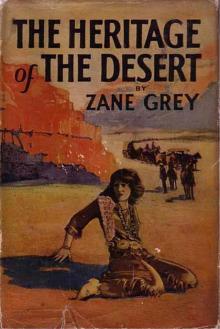 The Heritage of the Desert: A Novel
The Heritage of the Desert: A Novel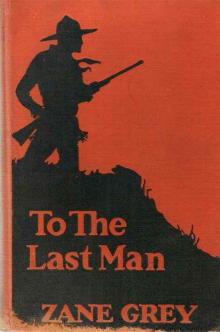 To the Last Man
To the Last Man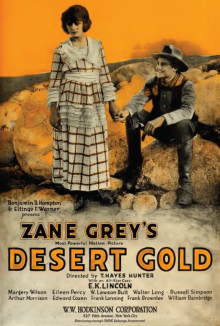 Desert Gold
Desert Gold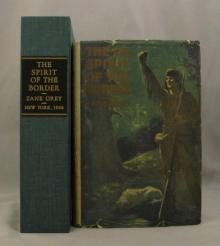 The Spirit of the Border: A Romance of the Early Settlers in the Ohio Valley
The Spirit of the Border: A Romance of the Early Settlers in the Ohio Valley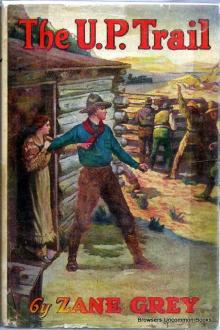 The U. P. Trail
The U. P. Trail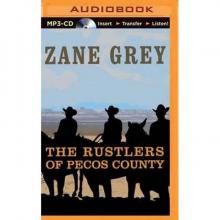 The Rustlers of Pecos County
The Rustlers of Pecos County The Border Legion
The Border Legion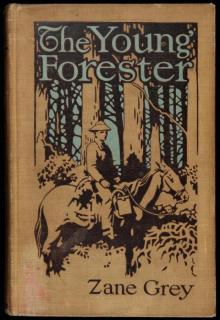 The Young Forester
The Young Forester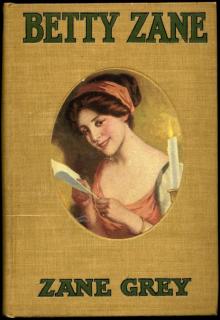 Betty Zane
Betty Zane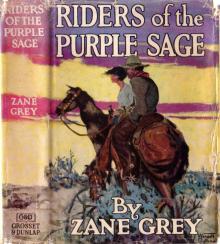 Riders of the Purple Sage
Riders of the Purple Sage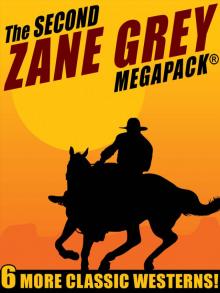 The Second Zane Grey MEGAPACK®
The Second Zane Grey MEGAPACK® The Rainbow Trail
The Rainbow Trail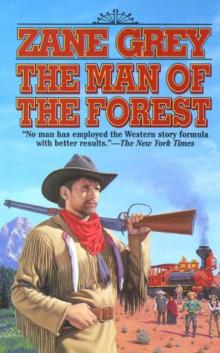 The Man of the Forest
The Man of the Forest The Mysterious Rider
The Mysterious Rider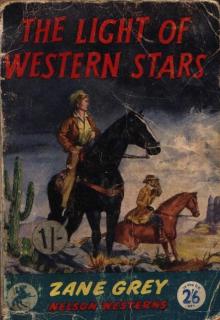 The Light of the Western Stars
The Light of the Western Stars The Last of the Plainsmen
The Last of the Plainsmen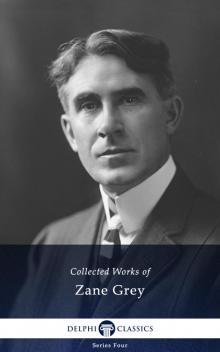 Collected Works of Zane Grey
Collected Works of Zane Grey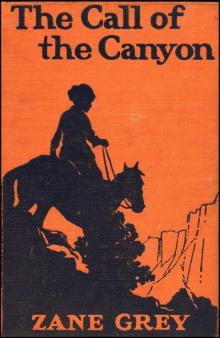 The Call of the Canyon
The Call of the Canyon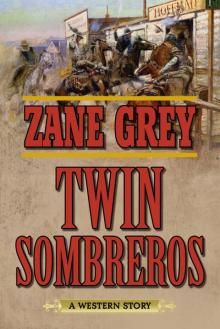 Twin Sombreros
Twin Sombreros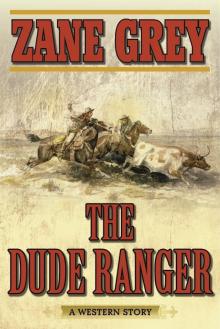 The Dude Ranger
The Dude Ranger The Water Hole
The Water Hole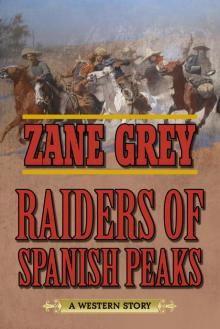 Raiders of Spanish Peaks
Raiders of Spanish Peaks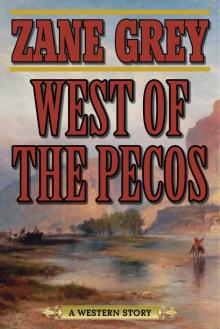 West of the Pecos
West of the Pecos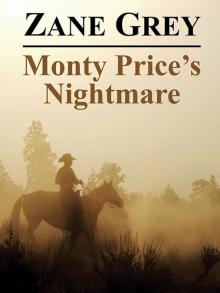 Monty Price's Nightmare
Monty Price's Nightmare Stairs of Sand
Stairs of Sand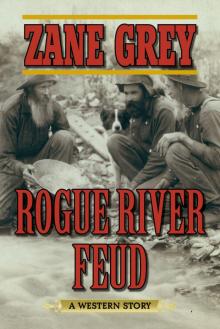 Rogue River Feud
Rogue River Feud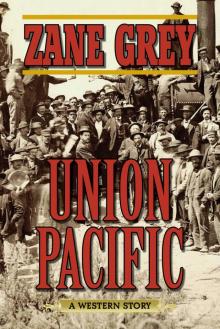 Union Pacific
Union Pacific The Western Romance MEGAPACK ®: 20 Classic Tales
The Western Romance MEGAPACK ®: 20 Classic Tales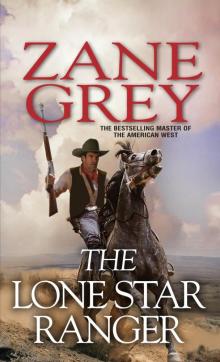 The Lone Star Ranger
The Lone Star Ranger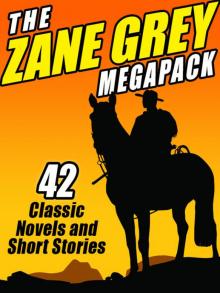 The Zane Grey Megapack
The Zane Grey Megapack Shadow on the Trail
Shadow on the Trail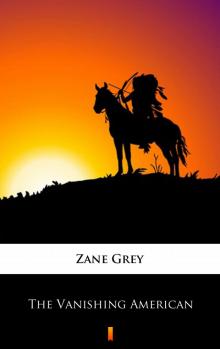 The Vanishing American
The Vanishing American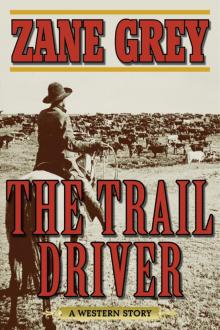 The Trail Driver
The Trail Driver War Comes to the Big Bend
War Comes to the Big Bend The Westerners
The Westerners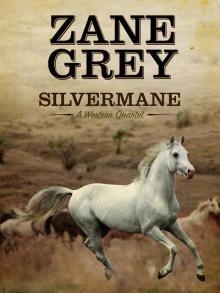 Silvermane
Silvermane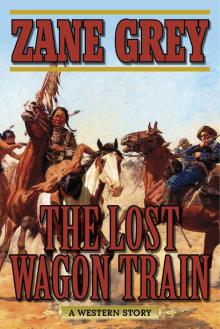 The Lost Wagon Train
The Lost Wagon Train Desert Gold and the Light of Western Stars
Desert Gold and the Light of Western Stars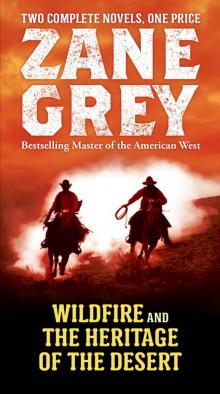 Wildfire and the Heritage of the Desert
Wildfire and the Heritage of the Desert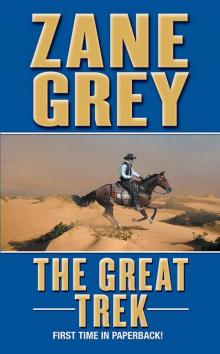 The Great Trek
The Great Trek Cabin Gulch
Cabin Gulch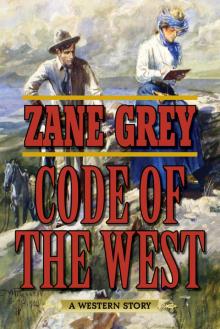 Code of the West
Code of the West Sunset Pass
Sunset Pass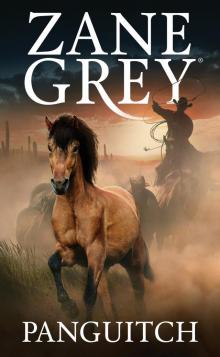 Panguitch
Panguitch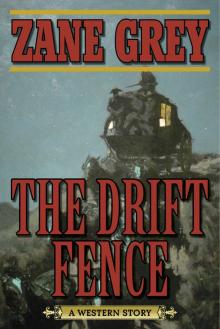 The Drift Fence
The Drift Fence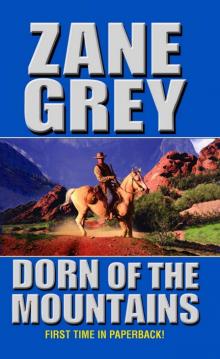 Dorn Of The Mountains
Dorn Of The Mountains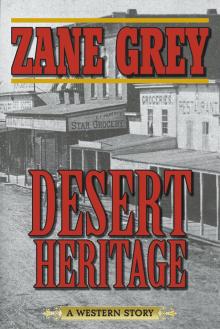 Desert Heritage
Desert Heritage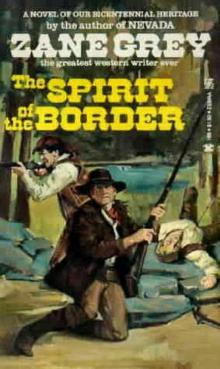 The Spirit Of The Border
The Spirit Of The Border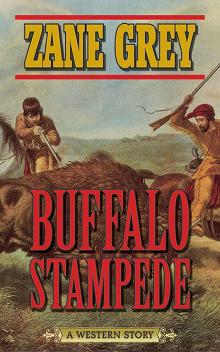 Buffalo Stampede
Buffalo Stampede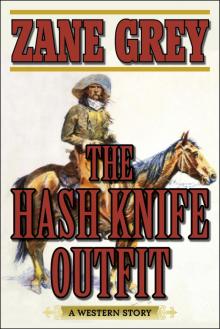 The Hash Knife Outfit
The Hash Knife Outfit The Lone Star Ranger and the Mysterious Rider
The Lone Star Ranger and the Mysterious Rider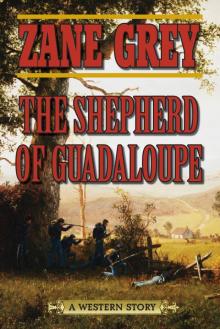 The Shepherd of Guadaloupe
The Shepherd of Guadaloupe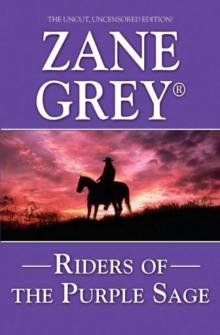 Riders of the Purple Sage (Leisure Historical Fiction)
Riders of the Purple Sage (Leisure Historical Fiction)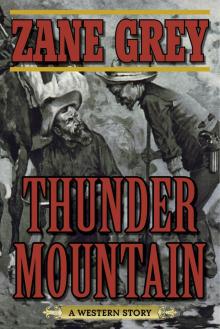 Thunder Mountain
Thunder Mountain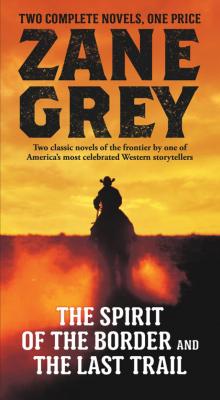 The Spirit of the Border and the Last Trail
The Spirit of the Border and the Last Trail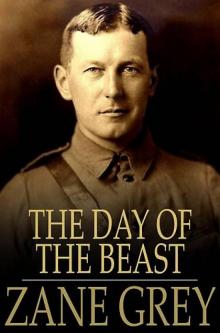 The Day of the Beast
The Day of the Beast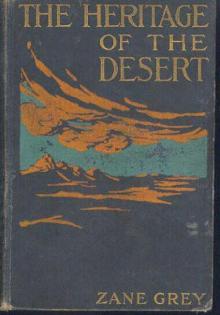 The Heritage of the Desert
The Heritage of the Desert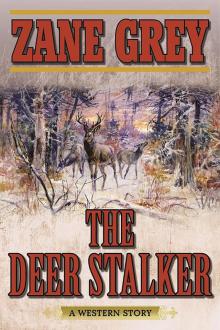 The Deer Stalker
The Deer Stalker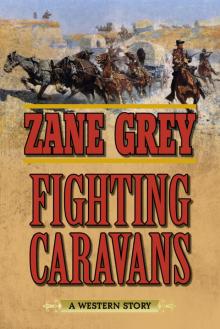 Fighting Caravans
Fighting Caravans